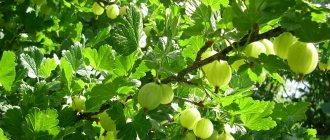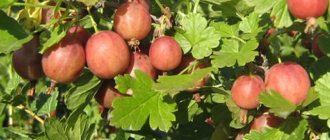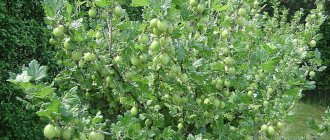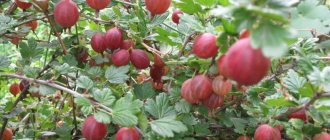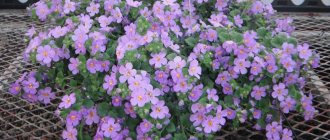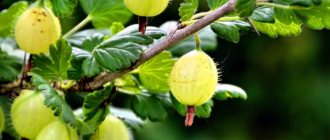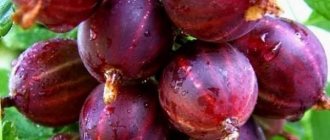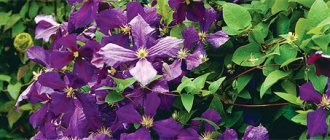Characteristics, description
Spring gooseberry grows up to 1.5 m. The plant has the appearance of a medium-sized shrub with even shoots. The crown is slightly spreading. The thorns are double or single, covering the branches moderately. The leaves are dark green with a glossy sheen.
The berries ripen yellow, round-oblong in shape. The weight of one copy is 3-4 g. The taste is sweet and sour with pronounced sweetness.
Description of the variety
Yarovaya gooseberry was obtained at the Belarusian Research Institute of Potato and Fruit and Vegetable Growing through the free pollination of the Columbus variety. Recommended for cultivation in the Central region of Russia, it is considered promising.
A medium-sized bush with few straight shoots, thorns on the branches are infrequent and short. The berries, weighing 3–5.5 g, are oblong in shape and yellow in color. They are distinguished by thin skin and juicy pulp, sweet and sour taste. With proper care, you can collect 3–5 kg from a bush per season. berries
Advantages and disadvantages
The Yarovoy variety has many advantages.
- Among them:
- early maturation;
- frost resistance;
- drought resistance;
- high productivity;
- transportability;
- high taste qualities;
- resistance to powdery mildew, a fungal disease of fruit and berry crops that manifests itself as a white coating on parts of the plant.
- Farmers also highlight several main disadvantages of the variety:
- low immunity to some fungal diseases;
- the fruits quickly ripen on the branches, and the pulp acquires a mealy consistency.
Drought resistance, frost resistance
The drought resistance of the crop is high. The plant begins to wither when the soil is waterlogged, but thrives in bright sun.
The bushes survive frosts down to -35°C. At lower temperatures, branches and buds begin to die.
Video: Early gooseberry variety Yarovaya
Productivity and fruiting
Spring gooseberry is a high-yielding variety. Farmers harvest up to 6 kg of berries from one bush . With proper care, fruiting lasts up to 20 years after planting. The ripening period is early - the harvest will be ripe by the end of June.
a brief description of
Advantages of the variety
- very early ripening - harvesting can be done as early as early July;
- the berries do not fall off when overripe, but lose their taste;
- winter-hardy and tolerates temperature changes well;
- unpretentious to the soil;
- resistant to diseases, especially powdery mildew;
- universal purpose;
- the fruits remain firmly on the branches even when fully ripe.
Disadvantages of the variety
- thorniness of shoots;
- if you are late in harvesting, the taste deteriorates and becomes mealy.
Landing
Gooseberries are planted at certain times according to a clear pattern. To plant a seedling correctly, you also need to know which site to choose and how to choose the right seedling.
Did you know? Gooseberries grow wild in some countries in Europe, Asia and North America.
Deadlines
You can plant gooseberries in spring or autumn:
- in October (a month before the first frost);
- in March - April (before the beginning of the growing season).
Farmers prefer autumn planting because gooseberries adapt better to climatic conditions. In spring, the time from warming to the beginning of the growing season is too short, and it is not always possible to have time to plant a bush before the sap begins to flow.
The gardener chooses the timing based on the terrain, weather forecast and personal preferences.
Choosing a suitable location
Establishment and fruiting are largely influenced by the place where the gooseberry grows. The Yarovaya variety is recommended to be planted on a site with the following characteristics:
- lack of shadow;
- protection from strong winds;
- groundwater at a distance no higher than 1.5 m to the ground;
- substrate of neutral or weak acidity.
Find out in more detail what the acidity of the soil should be for planting gooseberries.
Selection and preparation of planting material
The quality of the planting material is indicated by the following parameters of the seedling:
- age 2 years;
- 2-3 main shoots from 25 cm long;
- root length is not less than 25 cm;
- leaves only on the tops of branches;
- no damage to the cortex.
Before planting, seedlings are cut to a third of their length . There should be up to 5 buds left on each branch. The procedure is necessary for subsequent active growth. Gardeners also check the root system and remove dried roots.
Planting scheme
Gooseberry bushes are planted according to a pattern of 1–1.5 m between plants and 2–2.5 m between rows. It is not worth planting shrubs closer. Thickened plantings develop and bear fruit worse.
Description of Yarovaya gooseberry
A description and photo of the Yarovaya gooseberry variety will help amateur gardeners decide on the choice of berry crop.
The Yarovaya gooseberry variety is considered very promising, which was obtained at the Belarusian Scientific Research Institute of Potato and Horticulture as a result of free pollination of seeds of the Columbus variety and belongs to the yellow-fruited varieties. Medium-sized, slightly spreading bushes with a neat crown and almost straight branches reach 1 - 1.5 m. Gooseberry shoots are erect, with an average degree of coverage with long, thin, double, less often single, thorns. This characteristic feature of the variety distinguishes it from others, making it attractive to many gardeners who do not like this crop due to problems associated with increased thorniness of the bushes - during pruning and picking berries.
Lemon-yellow gooseberries of the Yarovaya variety have thin skin and a refreshing sweet-sour taste. The fruits of the shrub are oblong and round in shape and have practically no edge; in rare cases they are covered with individual hairs. The weight of medium-sized berries is 3 - 4 g. The branches of the bushes of the Yarovaya gooseberry variety are covered with shiny dark green leaves with rounded jagged edges.
The gooseberry variety Yarovaya is a self-fertile crop. She does not need pollinators. Fruit set occurs when pollination occurs with pollen from its own flowers. But when pollen from flowers of other varieties gets in, a sharp increase in fruiting occurs.
The Yarovoy variety is most widespread in the North-Western, Central Black Earth, Volga-Vyatka and Volga regions of the country.
Drought resistance, frost resistance
Gooseberries are a temperate climate crop. The spring gooseberry variety is characterized by good winter hardiness. The berry crop is grown without shelter for the winter up to 60° north latitude. In the northern European part of Russia, the Far East, Altai and Siberia, the variety requires additional insulation in winter.
In central Russia, spring gooseberries can tolerate temperatures down to –25…-30 °C. At lower temperatures, the root system of the plant freezes, which is reflected in a decrease in yield indicators. In addition, the crop may freeze due to poor preparation for wintering in the summer-autumn period. This may be due to increased autumn temperatures and higher soil moisture levels.
The productivity of the Yarovoy variety is restored after freezing within 4–5 years. The annual growth of gooseberries freezes at a temperature of -33 ... -34 °C. The roots of young plants are at a temperature of -3 ... -4 ° C. The central chernozem zone is the most favorable for growing the Spring gooseberry variety.
Compared to other types of gooseberries, the Yarovaya variety is characterized by increased drought resistance and tolerance to elevated temperatures. But, being a moisture-loving crop, in conditions of insufficient humidity, gooseberries grow and bear fruit poorly. It is especially important to monitor this indicator during the period from flowering to ripening of berries. The recommended rainfall should be 200 mm. In dry years, the bushes need to be watered abundantly, this will increase the yield by 20 - 25%. The southern regions are unsuitable for growing the spring gooseberry variety without additional irrigation.
Excess moisture also does not benefit the root system of plants. Spring gooseberries are not recommended for planting in wetlands and areas with close groundwater.
Fruiting, productivity
The Yarovaya gooseberry variety is characterized by high yields - up to 6 kg per bush. Under favorable conditions, the bushes can bear fruit for 20 years. Most of the harvest is formed on branches aged 3 to 6 years. Like most berry crops, gooseberries need good light. The shading of growing areas leads to the fact that the berries of the variety become smaller, and the total volume of the harvest is reduced.
The growing season of the variety begins earlier than that of other berry crops. The fruiting period occurs at the end of June - beginning of July. When ripe, the berries stay on the branches for a long time, without falling off for a long time. But don’t delay harvesting. This can lead to a decrease in the vitamin and sugar content of the fruit.
Important! When overripe, the berries bake in the sun and become watery and tasteless.
Gooseberry berries of the Yarovaya variety are stored in a cool room for a period of 3–5 days, in refrigerators – much longer.
The spring gooseberry variety is one of the most transportable crops among berry plants. For transportation over long distances, unripe fruits are used, which are poured into boxes with hard walls. You cannot pour berries from one box to another, this can lead to a decrease in the quality of the product.
Gooseberries of the Yarovaya variety contain many micro- and macroelements, as well as up to 42% vitamin C. They can be consumed either fresh or after heat treatment in the form of various preparations - compote, jam, jelly, jelly. The benefits of gooseberries include lowering cholesterol levels, strengthening blood vessels, ridding the body of toxins and heavy metal salts, as well as normalizing the condition of hypertension, obesity, anemia
Advantages and disadvantages
Among other types of gooseberries, the Yarovaya variety stands out due to the following characteristic features:
- early ripening;
- good yield;
- resistance to powdery mildew;
- thin skin and dessert taste of berries;
- high level of frost resistance;
- endurance and shape retention during transportation.
The disadvantages of this variety include:
- rapid overripening;
- mealiness of berries in case of delay in harvesting;
- susceptibility to fungal diseases.
Features of seasonal care
High yields cannot be achieved without plant care. Shrubs need to be regularly watered, fed, pruned and treated to prevent diseases and pests.
Video: Planting and caring for gooseberries
Soil care
Soil care involves regular watering and loosening the soil.
Throughout the growing season, shrubs are watered as needed . The soil is moistened every 3-4 days by pouring 10 liters of water under the bush. In mid-summer, watering is especially important as the plant grows buds.
Important! The bushes are watered in the morning or evening strictly under the trunk. If water gets on the leaves, burns are likely to occur.
After each watering and rain it is necessary to fluff up the soil. Loosening is necessary to prevent the soil from forming a crust.
When the substrate dries out, the root system receives less oxygen, which impairs plant growth
Preventative treatment
The culture is susceptible to fungal diseases. To prevent plantings, they are sprayed with a 1% solution of copper sulfate or ash solution. Drug consumption is 10 liters per 100 m².
Read also how to properly treat gooseberries with Topaz fungicide.
Feeding
For active fruiting, shrubs must be fed regularly. It is recommended to apply fertilizers twice a year:
- in the spring at the beginning of the growing season - nitrogen-containing substances (urea, ammonium nitrate);
- in summer, during the period of fruit set , a complex feeding of 30 g of potassium sulfate, 70 g of double superphosphate and 100 g of ash.
Support
To ensure that the bush grows evenly and the branches do not sink to the ground, the shoots are tied to a support. An excellent option would be a trellis in the form of a frame encircling the plant . This kind of support can be easily constructed from available materials, for example: wooden stakes and rope or a metal pipe. The support helps maintain the compact appearance of the bush, saves space on the site and gives direction for plant growth.
Read more about how to build a bush holder for gooseberries.
Trimming
The formation of the bush is carried out annually before the beginning of the growing season in the spring or after the end of sap flow in the fall. The gardener should remove:
- diseased branches;
- broken shoots;
- root shoots;
- branches growing inward and thickening the crown.
According to the rules of agricultural technology, the plant must have up to 20 shoots
Planting and care
Before planting gooseberries of the Yarovaya variety, it is necessary to pay careful attention to the choice of planting site. The area should be well lit. Failure to comply with this condition will lead to a reduction in yield and a decrease in the percentage of sugar content in the berries. It is recommended to plant bushes along fences or fences. This will protect the plantings from wind and bad weather. The soil should be slightly acidic or neutral. In order to prevent water stagnation in the event of seasonal flooding of the site, it is recommended to provide drainage.
The best time for planting gooseberries is autumn, 3 - 4 weeks before the onset of frost. You can plant seedlings in the spring, but in a very short time - between the melting of the snow and the beginning of sap flow.
For seedlings of the Spring gooseberry variety, dig holes that are 2 times larger than the volume of the roots. The top fertile layer is removed and mixed with rotted manure. A mixture of superphosphate and potassium sulfate can be added to the recess. The branches of young seedlings are cut to 1/3 of the length and planted in planting holes, deepening by 5 - 8 cm. The distance between neighboring bushes should be at least 1 - 1.5 m. A distance of 2 - 2.5 m must be maintained between rows.
Important! Thickening of gooseberry bushes of the Yarovaya variety leads to a decrease in yield, so it is necessary to thin them out in a timely manner.
Growing rules
After planting in the soil, seedlings need to create favorable conditions for effective growth and high yields. Caring for gooseberries of the Yarovaya variety consists of several main stages, at each of which it is recommended to follow the basic rules of cultivation:
- Watering. The spring variety tolerates drought quite well, but for better growth and yield it is necessary to ensure that the plant receives enough moisture during the growing season. Between the end of July and the beginning of August, the formation of future buds occurs. The recommended frequency of watering at this time is 1 - 2 times a week, 1 bucket per adult Yarovaya gooseberry bush. You need to water from below around the branches, without affecting the foliage. In sunny weather, wet leaves can get burned, and in cloudy weather, a wet surface can become a source of development of various diseases.
- Feeding. It is carried out twice a year: in the spring, and also during planting, organic fertilizer in the form of horse humus or humus is added to the soil. Nitrogen-containing fertilizers, such as urea, will also be beneficial. In summer, during the active growth of gooseberries, it is recommended to add mineral fertilizer obtained from the following components:
- 70 g double superphosphate;
- 100 g of wood ash;
- 30 g of potassium sulfate.
- Trimming. If carried out correctly, you can not only increase the size of the fruit and the overall yield, but also save the Yarovaya gooseberry variety from diseases. Pruning is carried out in early spring in April, before the buds appear, or in late autumn, after harvesting - before the first frost. The branches are cut close to the soil, taking special care, since the root system of the bushes is very close to the surface. In the first years, perennial branches are cut in half: this will create the base of the bush. After 3 years, the bushes of the Yarovaya variety are thinned in order to eliminate thickening. Weak, dried out, old and improperly growing shoots are removed completely. Branches with berries that tend towards the ground are also removed. To rejuvenate the bushes, every year it is necessary to remove several of the oldest shoots. A correctly formed crown of a bush should contain 15–20 branches of 2–3 pieces each. of every age.
- Protection from rodents. To combat rodents in the fall in the garden, it is necessary to dig up tree trunk circles and row spacing. This will destroy existing mouse holes. During this period, a layer of soil is raked from the base of the gooseberry bush, and the lower section of the trunk is tied from the root collar to the first branches with spruce branches so that the needles are directed downward. This will repel pests. You can use sedge or reeds for the same purpose. After tying, the tree trunk circle is again sprinkled with soil. Straw attracts mice, so it is not used. In spring, the bushes are freed from the protective structure. In winter, the snow near the plantings is trampled down to prevent rodents from penetrating the trunk and roots.
- Preparing for winter. Before the first frost, the planting area must be put in order - collect all fallen leaves, remove weeds, trim old and damaged branches. The soil is loosened, mulched and fertilizers are applied - ash, compost, potassium phosphate. Plants are not covered for the winter, since the Yarovaya gooseberry variety is characterized by good frost resistance.
Advice! To prevent the branches from lying on the ground under the weight of the berries, stakes are driven under them and horizontal slats are secured. Shoots with a large number of fruits are tied up, protecting the branches from possible breaks.
Reproduction methods
There are several ways to propagate gooseberries. They all differ and have their own nuances.
| Seeds | The method is suitable for breeding new varieties. Plants bred through pollination from a mother plant do not retain varietal characteristics. |
| Dividing the bush | You can divide the bush before or at the end of the growing season. To do this, the plant is dug up and divided into several parts, each of which has a rhizome, buds and shoots. The separated parts of the bush are planted in a new place. |
| By layering | The branches of the bush are bent to the ground in the spring and secured with staples. When the shoots send out vertical layers, they are dug into the ground. By autumn, the cuttings take root. Now the new bush can be separated from the mother one and transplanted to a new place. |
| Cuttings | For propagation, you can use lignified or green cuttings. Shoots about 20 cm long are cut and planted in fertile soil. When the roots grow, the plants can be planted in a permanent place. |
Reproduction
Propagation of gooseberries of the Yarovaya variety occurs by cuttings and layering. In both cases, young strong shoots are used.
When layering, shoots must be dug in and pressed to the ground with metal hooks until they take root. The method is considered the simplest.
When propagated by cuttings, gooseberry stems are cut into sections 10-15 cm long. For rooting, the cuttings are placed in a solution of 1 liter of water and 150 g of heteroauxin. Then a composition for planting and rooting is prepared, which consists of equal parts of sand and peat. The container with the planted cuttings is placed in a greenhouse or greenhouse.
Diseases and pests
The variety is resistant to powdery mildew. However, there are other diseases that are dangerous to the crop. Among them:
- septoria (brown spots up to 3 mm in diameter appear on the leaves, which later turn white);
- anthracnose (leaf blades become covered with red spots, which grow and merge as the disease progresses).
To treat these two fungal diseases, use a 3% solution of copper sulfate or a 3% solution of Bordeaux mixture.
We also recommend reading how to deal with lichen and moss on gooseberries.
Plants can also be affected by parasites:
- gooseberry moth;
- glassware;
- yellow sawfly;
- spider mite;
- gooseberry aphid.
Pests are removed with insecticides . The drug Karbofos has proven itself to be effective in treating all of these parasites.
Not only a professional farmer, but also a simple summer resident can cope with growing the Yarovoy variety. The shrub will decorate the garden plot and will certainly please the owner with a delicious ripe harvest.
Pests and diseases
Like many other berry crops, the Yarovaya gooseberry variety is susceptible to the negative effects of pests and various diseases.
Of the pests, the greatest damage to the spring gooseberry variety is caused by:
- The gooseberry moth is a gray moth-like butterfly that lays up to 200 eggs, from which light green caterpillars are born that damage and destroy the seeds and pulp of the berries.
- The glasswort is a small butterfly that lays eggs in cracks at the base of the buds of young shoots, from which caterpillars emerge, gnawing into the buds and branches, which gradually wither and dry out.
- The yellow sawfly is a small butterfly that lays eggs during the gooseberry flowering period. The voracious larvae destroy all foliage, which leads to the destruction of the current and next year's crops.
- Common spider mite - an insect less than 1 cm in size lives on the underside of leaves, which become spotted, turn yellow, warp, dry out and fall off.
- Gooseberry aphid - sucks the juice from the plant, damaging the leaf petioles, blades and tops of young branches. Leaves curl and fall off, shoots become bent and growth stops.
To combat pests, gooseberry bushes of the Yarovaya variety are sprayed with the following compounds:
- Bordeaux mixture 1 – 3%;
- copper sulfate - 3%;
- ash.
It is recommended to treat the soil around the bushes with the same means to prevent the spread of various diseases. The main ones include:
- Sferoteka – American powdery mildew. A fungal disease that affects all parts of the bush, first with a white powdery coating and then with a dense coating. The leaves dry out and fall off, the berries crack.
- Septoria - white spotting of leaves - first brown, and then white. Foliage falls en masse, the volume and quality of the harvest decreases.
- Anthracnose is a marsupial fungus that appears in areas with a humid climate. Small dark spots appear on the lower old leaves, which then merge. The disease can lead to almost complete denudation of bushes in the second half of summer, death of shoots and reduced yield.
Unlike other berry crops, the Yarovaya gooseberry variety is practically not susceptible to viral diseases, with the exception of one transmitted by aphids, as well as by grafting. Translucent yellow stripes appear along the leaf veins. Leaves wrinkle and become deformed. In case of severe infection by the virus, a general inhibition of plant growth, development and fruiting occurs. Timely measures taken will help save gooseberries from death and prevent similar situations from occurring in the future.
Reviews from netizens
As for an extremely early gooseberry, this variety is very worthwhile, with very good characteristics: the taste is good, I would even say excellent; attractive color from pale yellow to deep yellow, for me it is one of the most productive, almost the entire branch is covered with berries, branches fall to the ground under their own weight, which in rainy weather brings inconvenience, since the berries begin to rot, and this requires additional labor to preserve the berries from rotting. I did not weigh the berries on purpose, but visually they are quite large. Resistant to powdery mildew. Winter hardiness is very good, after last winter, the harvest was one of the best, together with Kurshu Dzintars. I consider this variety promising for cultivation in Ukraine. In addition to the information in post No. 1: the variety was bred by A.G. Voluznev from sowing seeds of the Columbus variety (free pollination). According to E.P. Franchuk, they contain 7.08-8.43% sugars, 1.95-2.26% acids and up to 41.2 mg% vitamin C. According to A.G. Voluznev , average yield is 3.4 kg, on personal plots - 5-6 kg per bush. Universal use. Very early ripening period (in Belarus - late June - early July, in Michurinsk it ripens simultaneously with garden strawberries). Characterized by accelerated development. Because of this, it “escapes” from being affected by American powdery mildew. Resistance to the disease is maintained in various ecological and geographical conditions.
Levchenko
https://forum.vinograd.info/showpost.php?p=564139&postcount=2
Reviews
Spring is my favorite variety among the early ones. The berries are beautiful, yellow, tasty, and the yield is high. The shoots can be said to be covered with berries, due to which they can lie on the ground, the fruits begin to rot, so it is necessary to make a fence or tie the branches to a trellis. The variety does not tolerate thickening, so it requires mandatory pruning.
My Yarovoy harvest appeared at the end of June. The fruits are very tasty, large, fleshy. I really liked the variety, I consider it the best among the early ones.
Spring gooseberry takes root well in almost any area and is undemanding to soil and watering. With a little care, you can get a good, rich harvest of early berries of excellent taste.
Characteristics and description of fruits
Yields are high - up to 6 kg per bush. Most of it is formed on shoots that are 3-6 years old. Under the right growing conditions, stable fruiting lasts at least 20 years.
An increase in the yield and weight of berries is facilitated by timely watering and good lighting. In the shaded area, the fruits become smaller and their number decreases.
The fruiting period begins at the end of June - beginning of July. The berries are lemon-yellow in color, with thin skin and a sweet and sour taste. The shape is oblong, there is almost no edge, the average weight of the fruit is 3-4 g.
Important! Overripe gooseberries bake in the sun and take on a watery and empty taste.
Areas of their application
The Yarovaya variety belongs to the category of universal use. The berries are processed into jam, compotes and various desserts. Freshly harvested crops are stored in the refrigerator, scattered in containers in a thin layer.
If transportation is necessary, unripe gooseberries are collected.
Reviews from summer residents
Most owners of the variety are satisfied with the variety they purchased; they note the taste and resistance to disease as advantages.
Svetlana, Minsk: “I decided to find a sweet variety of gooseberry. The seller advised Yarovaya, I believed it and for good reason. Already in the first spring I was pleased with a large number of berries. At the end of June I harvested the first harvest of sweet yellow berries.”
Dmitry, Nikolaev: “I am satisfied with the variety in terms of taste and yield, the berries are beautiful. Ripens a week earlier than other species. In 10 years I have never noticed powdery mildew.”
Leonid, Rostov-on-Don: “The variety justifies the title of early. The taste is good, there is little acid, the berries are medium to large in size. The branches were covered with them, so I had to make a support. Every season we make a lot of jam. We haven’t had to deal with pests or diseases yet.”

